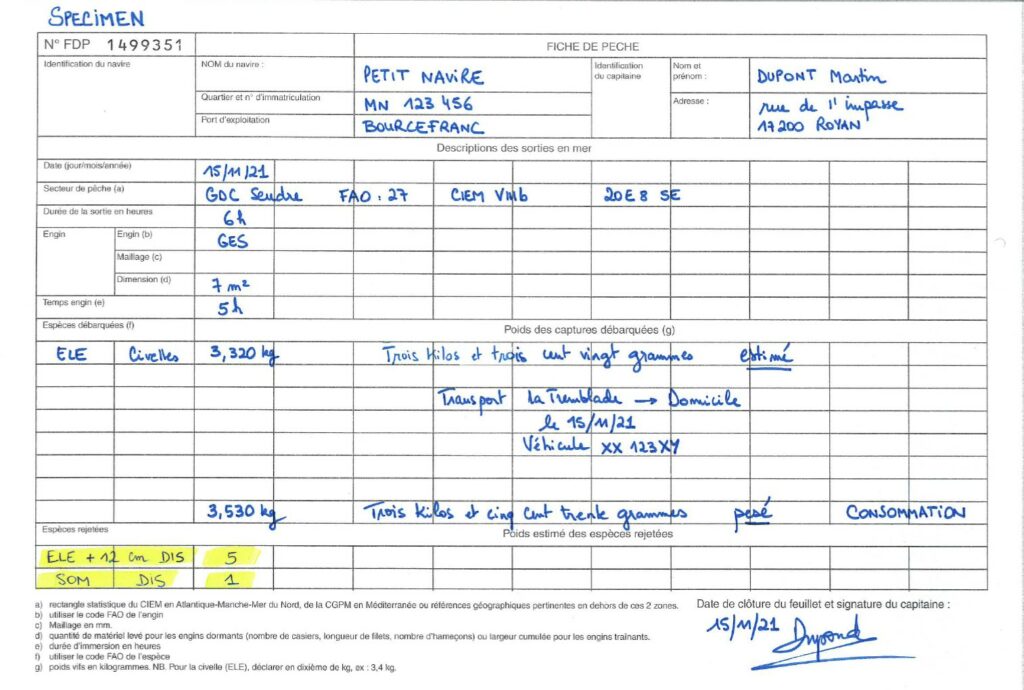Logbook
A catches report directly at the end of the trip and at the fishing site
As soon as the fishing is over and at the fishing site, the professional fisherman must weigh the catch as accurately as possible (10% error allowed). Then, he fills in a fishing sheet that will allow him to move to his selling or storage point. A hard copy of this sheet used in the maritime area is shown below:

This fishing form gives the name and registration of the vessel, the name of the owner and his address.
In the block below, it details the date and place of capture with the nomenclature in force, the fishing time and the characteristics of the gear used (in this case a pibalour).
In the next block, it specifies the nature of the catch with the FAO code and the common name, the weight caught to the nearest tenth of a kilogram (in this case glass eel) estimated on the vessel and weighed at the storage site. The mode of transport is identified from the fishing site to the storage site. The fisherman must also specify whether this catch is taken from the consumption quota or the restocking quota (here consumption). This weight will then be deducted either from the total consumption quota allocated to the Eel Management Unit (here GDC Seudre) or from the individual quota allocated to the fisherman.
The last block relates to discarded species (ELE +12 cm: eel and SOM: wels catfish)
This document will follow the catch throughout the transaction and is referenced by a number (here FDP 1499351) which must be mentioned on all invoices and sales sheets.